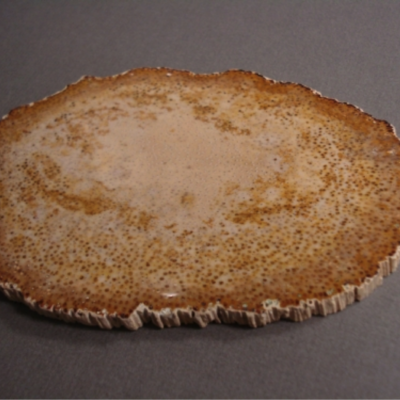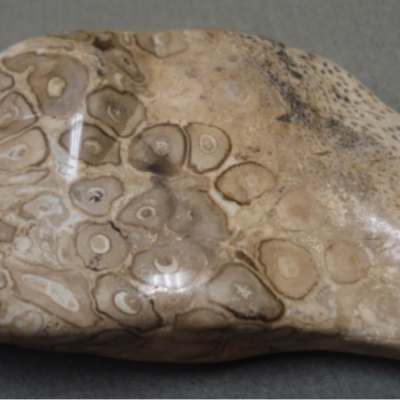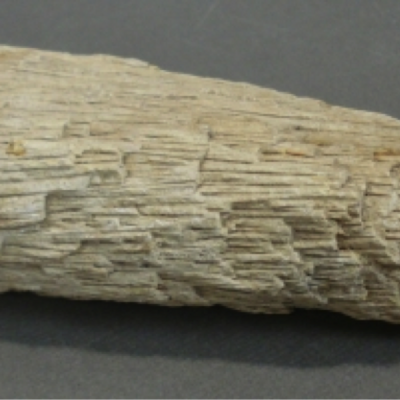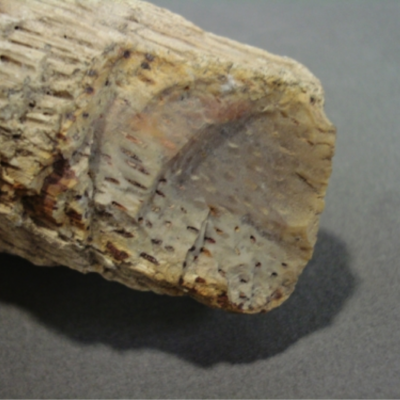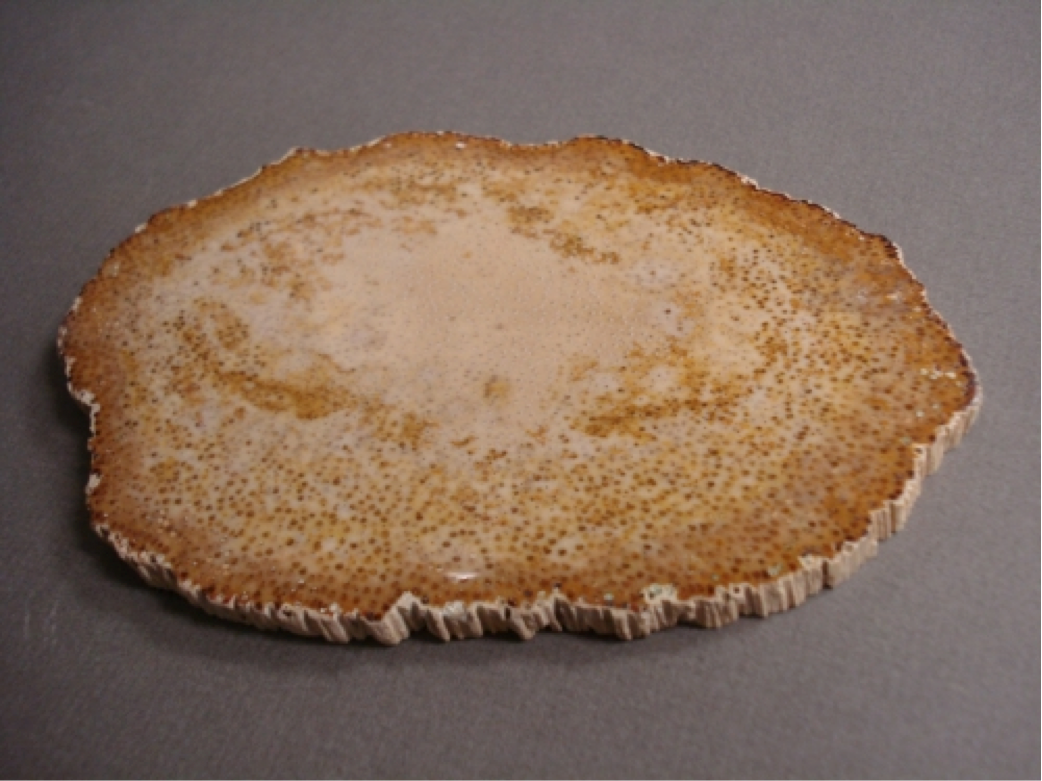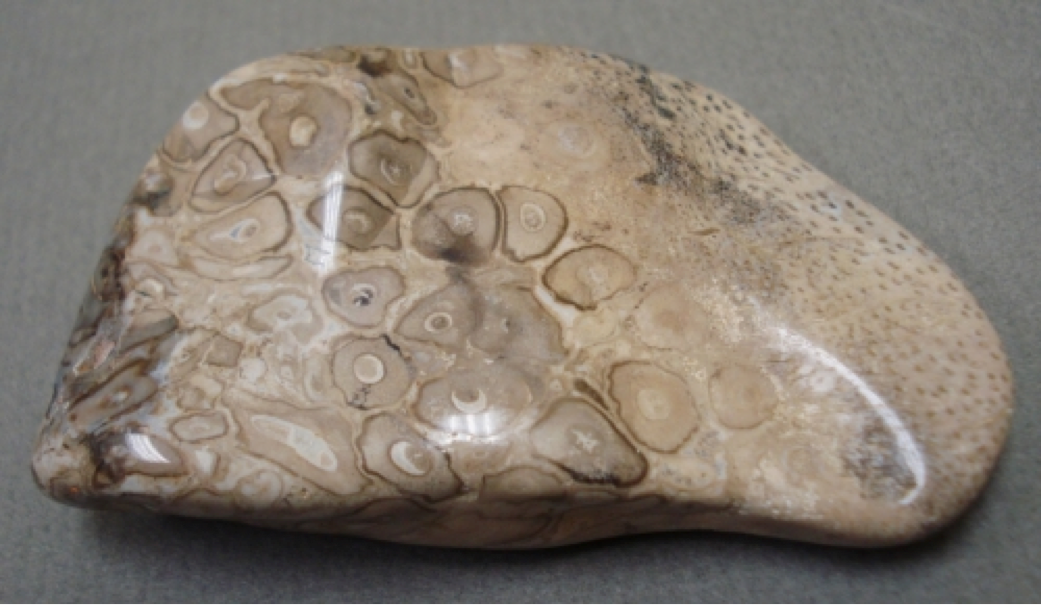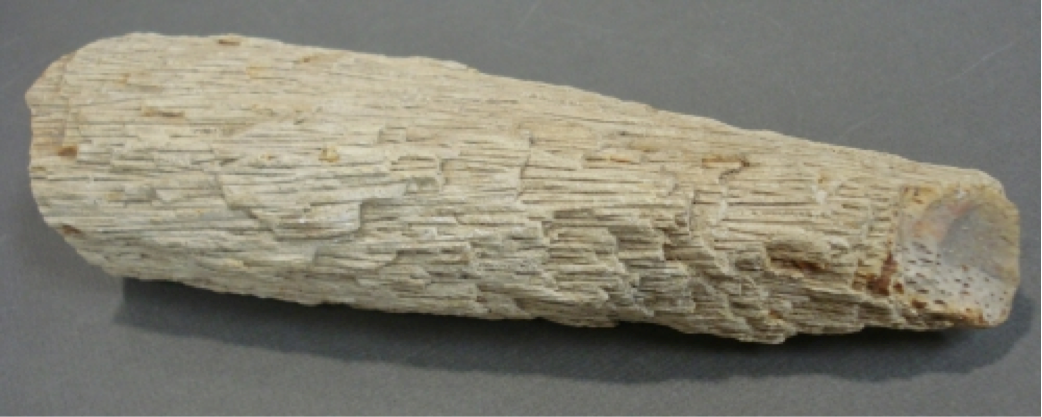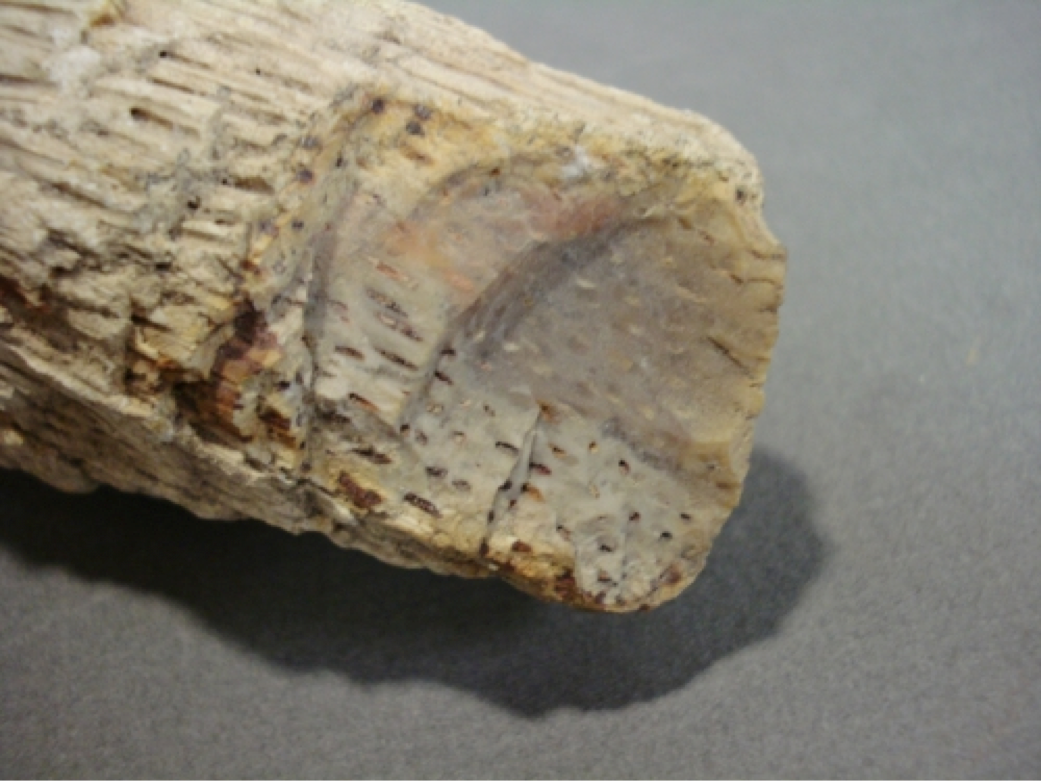Fossilized palm wood, also known as Palmoxylon, is an extinct genus of palm found around the world. The plants lived from the Late Cretaceous (83 million years ago) until the Early Miocene (34 million years ago). The spotted look of palmwood is caused by fossilized rod-like structures within the original wood. Depending upon the angle the stone is cut, they show up at spots, tapering rods, or lines. The fossilization process involves the replacement of organic wood cells by silicate minerals over time.
These pieces of palm wood shown here likely came from a site in east Texas or western Louisiana. These specimens were alive in the Oligocene epoch, 34-23 million years ago. The palms in this area are found near fossil corals, sponges, and mollusks, which indicates that the palms grew along prehistoric beaches (the prehistoric coast line of the Gulf of Mexico).
Interesting Facts:
- Native Americans used petrified palm wood to make projectile points and other tools such as knives, awls, and scrapers.
- Palmoxylon is the state stone of Texas, and the official state fossil of Louisiana.
